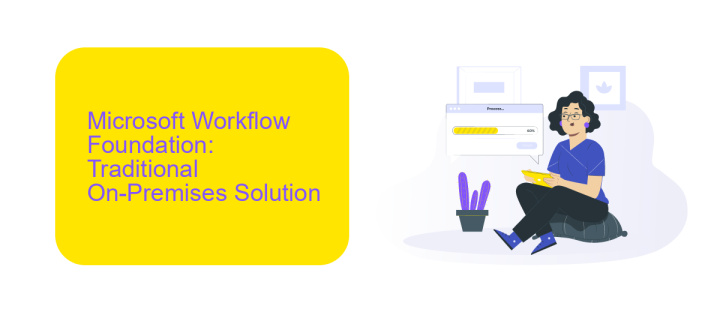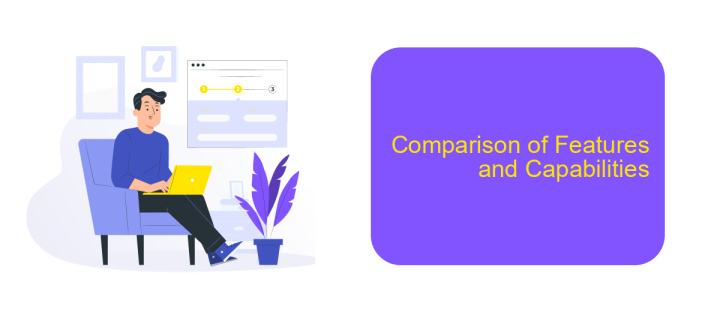Microsoft Workflow Vs Power Automate
In today's fast-paced digital landscape, automating workflows is crucial for efficiency and productivity. Microsoft offers two powerful tools for this purpose: Workflow and Power Automate. While both aim to streamline business processes, they cater to different needs and use cases. This article delves into the key differences, features, and benefits of Microsoft Workflow and Power Automate to help you choose the right solution.
Introduction: Understanding Workflow Automation
Workflow automation has become a critical component for businesses aiming to streamline their operations and improve efficiency. By automating repetitive tasks, companies can save time, reduce errors, and focus on more strategic activities. Microsoft Workflow and Power Automate are two prominent tools in this domain, each offering unique features and capabilities.
- Microsoft Workflow: Known for its robust integration with Microsoft products and complex workflow capabilities.
- Power Automate: Offers a user-friendly interface with extensive integration options, including third-party applications.
Both tools cater to different needs, and selecting the right one depends on your specific requirements. For instance, ApiX-Drive can further enhance workflow automation by seamlessly integrating various services and applications, ensuring smooth data flow and operational efficiency. Understanding the strengths and limitations of each tool will help you make an informed decision, ultimately driving better business outcomes.
Microsoft Workflow Foundation: Traditional On-Premises Solution

Microsoft Workflow Foundation (WF) is a robust, on-premises solution designed for creating, managing, and executing workflows within enterprise applications. As a part of the .NET Framework, WF provides a comprehensive set of tools and libraries that facilitate the development of complex workflows. This traditional approach ensures that all workflow-related data and processes remain securely within the organization's infrastructure, offering greater control over security and compliance. Additionally, WF supports a wide range of activities and can be integrated with various enterprise systems and services, making it a versatile choice for businesses with specific on-premises requirements.
Despite its robust capabilities, Microsoft Workflow Foundation can present challenges in terms of scalability and ease of integration with modern cloud-based services. To address these challenges, organizations often turn to integration platforms like ApiX-Drive. ApiX-Drive simplifies the process of connecting WF with external applications and services, enabling seamless data exchange and workflow automation without extensive coding. This integration capability allows businesses to leverage the strengths of WF while taking advantage of the flexibility and scalability offered by cloud-based solutions, thus creating a hybrid environment that maximizes efficiency and adaptability.
Power Automate: Modern Cloud-Based Workflow Service

Power Automate is a modern, cloud-based workflow service designed to streamline and automate repetitive tasks and processes. With its intuitive interface, users can create workflows with minimal coding knowledge, making it accessible for both technical and non-technical users. Power Automate integrates seamlessly with a wide range of Microsoft and third-party applications, enhancing productivity and efficiency across various business operations.
- Automate repetitive tasks to save time and reduce human error.
- Integrate with over 300 data sources including Microsoft 365, Dynamics 365, and third-party services.
- Utilize pre-built templates to quickly set up common workflows.
- Monitor workflow performance and gain insights through detailed analytics.
- Enhance workflows with advanced AI capabilities and custom connectors.
For businesses looking to further streamline their integration processes, services like ApiX-Drive offer robust solutions. ApiX-Drive allows users to connect various applications and automate data transfers without the need for extensive coding. This complements Power Automate by providing additional flexibility and ease of use, ensuring that businesses can maintain efficient and cohesive workflows across all platforms.
Comparison of Features and Capabilities

Microsoft Workflow and Power Automate are both powerful tools designed to automate business processes, but they offer different features and capabilities. Microsoft Workflow is integrated within SharePoint and focuses on automating workflows within the SharePoint environment. It is particularly useful for businesses already leveraging SharePoint for document management and collaboration.
Power Automate, on the other hand, is a more versatile tool that integrates with a wide range of Microsoft and third-party services. This flexibility allows users to automate workflows across various applications and platforms, making it a more comprehensive solution for diverse business needs.
- Integration: Power Automate supports a wide range of integrations, including Microsoft 365, Dynamics 365, and third-party apps via connectors. Microsoft Workflow is limited to SharePoint.
- User Interface: Power Automate offers a user-friendly, drag-and-drop interface, while Microsoft Workflow requires more technical expertise.
- Scalability: Power Automate provides better scalability and can handle complex workflows across multiple systems.
- Customization: Both tools offer customization options, but Power Automate provides more advanced features for tailoring workflows to specific requirements.
For businesses looking to streamline their integrations further, services like ApiX-Drive can be invaluable. ApiX-Drive allows seamless integration between various applications, enhancing the automation capabilities of both Microsoft Workflow and Power Automate. This makes it easier for businesses to connect their tools and optimize their processes efficiently.
Conclusion: Choosing the Right Workflow Automation Approach
Choosing between Microsoft Workflow and Power Automate largely depends on your organization's specific needs and existing infrastructure. Microsoft Workflow, being a part of the SharePoint ecosystem, offers robust capabilities for businesses already invested in Microsoft technologies. It is particularly well-suited for complex workflows that require deep integration with other Microsoft services. However, it may require more technical expertise to set up and maintain.
On the other hand, Power Automate provides a more user-friendly interface and broader integration options, making it accessible to a wider range of users. It supports numerous third-party applications and services, which can be further extended using tools like ApiX-Drive for seamless integration. This flexibility makes Power Automate a strong contender for organizations looking for a versatile and easy-to-use automation solution. Ultimately, the right choice will depend on your specific workflow requirements, existing technology stack, and the level of customization needed.
FAQ
What are the primary differences between Microsoft Workflow and Power Automate?
Can Power Automate integrate with third-party applications?
Is it possible to migrate workflows from Microsoft Workflow to Power Automate?
Which tool is more suitable for cloud-based automation?
What are some services available for implementing and configuring automation solutions?
Time is the most valuable resource for business today. Almost half of it is wasted on routine tasks. Your employees are constantly forced to perform monotonous tasks that are difficult to classify as important and specialized. You can leave everything as it is by hiring additional employees, or you can automate most of the business processes using the ApiX-Drive online connector to get rid of unnecessary time and money expenses once and for all. The choice is yours!

